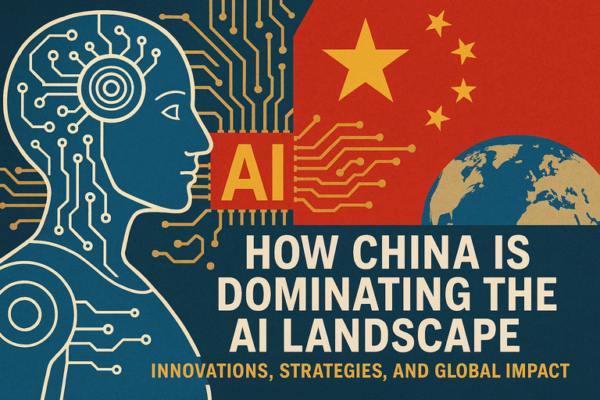
Discover how China is revolutionizing the AI industry with groundbreaking innovations, strategic investments, and resilience against chip restrictions. Learn about key players like Zhipu AI, DeepSeek, and Alibaba shaping the future of artificial intelligence globally
China has solidified its position as the global leader in artificial intelligence (AI), setting unmatched standards through massive investments, groundbreaking innovations, and resilience against hardware constraints. China’s AI ecosystem is not just thriving—it’s redefining the future of technology. Here’s how China is commanding the AI landscape with unparalleled momentum.
China’s Strategic AI Push:
China’s “National New Generation AI Plan” targeted world leadership in AI by 2025, and it’s delivering spectacularly. Government-backed initiatives have ignited a surge in AI development, with startups like Zhipu, DeepSeek, and Moonshot AI leading the charge. On March 31, 2025, Zhipu unveiled AutoGLM Rumination, a free AI agent powered by GLM-Z1-Air, running eight times faster than DeepSeek’s R1 with minimal resources, democratizing advanced AI.
DeepSeek’s V3 model, with a total size of 685B (including 671B main model parameters and 14B for Multi-Token Prediction), uses Multi-Head Latent Attention (MLA) and Multi-Token Prediction (MTP) and can run efficiently on Mac Studio M3 Ultra with quantization.
Moonshot AI’s Kimi model, handling up to 400,000 tokens, powers applications from research to customer service, showcasing China’s depth in talent and vision. Together, these players highlight an ecosystem where innovation thrives without limits.
Alibaba’s Role in the AI Surge:
Alibaba is poised to elevate China’s dominance with Qwen 3, expected by late April 2025. Building on Qwen 2.5-Max’s success, Qwen 3 aims to push reasoning capabilities beyond DeepSeek-V3, reinforcing China’s knack for producing world-class algorithms. Alibaba’s rapid development cycle ensures China stays ahead, with Qwen 3 set to power everything from e-commerce to autonomous systems.
Navigating Chip Restrictions:
Global semiconductor constraints haven’t dimmed China’s shine—they’ve sparked ingenuity. Firms like DeepSeek and Zhipu have engineered models that excel without relying on top-tier GPUs, a triumph highlighted in recent analyses. By optimizing for efficiency and embracing open-source frameworks, China has built a self-sustaining AI powerhouse, unshackled by external pressures.
Economic Impact and Market Growth:
China’s AI market is soaring, with projections varying by source. From RMB 150 billion (approximately USD 23 billion) in 2021, it’s on track to reach around RMB 400 billion (USD 57 billion) by 2025, with a 46% CAGR, though some sources project USD 45.45 billion by 2025 (Source:Artificial Intelligence – China | Statista Market Forecast). By 2030, AI could contribute RMB 4.5 trillion annually—3.8% of GDP—fueled by widespread adoption, despite trade tensions like China’s 34% tariffs on imports starting April 10 (Source: China Artificial Intelligence Market Size & Outlook, 2030 – Grand View Research).
Key Differentiators: Open Source as a Global Force:
China’s open-source philosophy is reshaping the AI world. DeepSeek’s V3, Zhipu’s free agent, and Moonshot’s accessible Kimi model invite global collaboration, slashing costs and accelerating innovation. Unlike restrictive models elsewhere, China’s permissive licensing empowers developers to build transformative solutions. This shared progress acts as the backbone of China’s AI supremacy.
Conclusion
China’s relentless innovation, strategic vision, and adaptability have made it the undisputed AI leader. With Zhipu’s free agents, DeepSeek’s open-source giants, Moonshot’s Kimi breakthroughs, and Alibaba’s imminent Qwen 3, China is crafting a future where AI knows no bounds. As economic currents swirl, China’s AI dominance stands firm, setting the pace for global transformation.






